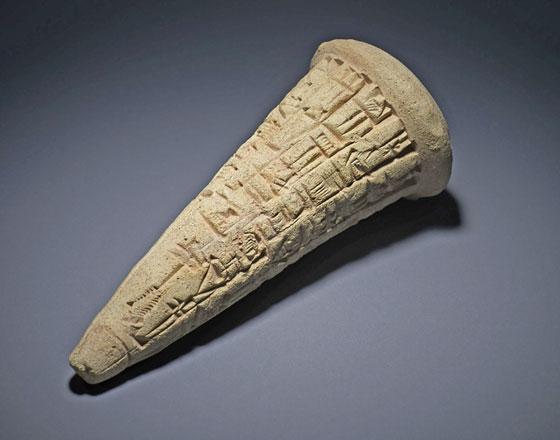The British Museum is returning to Iraq a collection of looted antiquities up to 5,000 years old, after identifying the exact temple they came from in a unique piece of archaeological detective work.
The eight objects were to be handed to the Iraqi embassy on Friday during a private ceremony at the London-based museum from where they were to return to Iraq.
The main items of the collection are three clay cones, Al Jazeera reported.
It also includes a polished, yellowish river pebble, a fragmentary white gypsum mace-head, a white marble amulet pendant in the form of a reclining bull or buffalo and a red marble square stamp seal or amulet depicting two similar animals facing in opposite directions.
The items were confiscated by British police in May 2003, a few months after the US-led invasion of Iraq, from a now-defunct dealer in London who failed to provide any paperwork for them.
Leading Clues
Normally the detailed provenance of such items would be hard to establish, but three of them, fired clay cones, carried Sumerian inscriptions that gave a clue to their origins.
In a remarkable coincidence, they were identical to cones found on a site in the ancient city of Girsu, now known as Tello, in southern Iraq, where the British Museum has been training Iraqi archaeologists since 2016.
"The broken objects the robbers left next to the looting holes were broken cones with exactly the same inscription that we have on the cones that were seized," said the team's lead archaeologist, Sebastien Rey.
Identical cones were also found in the walls of a site at the Eninnu temple —pinpointing the looted items' source with a level of accuracy that Rey said was "completely unique".
"We could have an idea that maybe these objects came from southern Iraq, but to be able to narrow it down to the particular site, and even to the particular holes—this is extremely rare," he told AFP.
The marbles in the collection both date back to 3000 BC, whereas the cones are believed to be from about 2200 BC.
The identical cuneiform inscriptions on the cones reference the god the temple was built for and the king who built it.
Similar cones have been found in many other sites, but Rey said until the Tello excavation began in 2016, no one really knew what they were for.
Finding them in their original positions inside temple walls led experts to conclude they were votive objects, dedicated to the gods by Mesopotamian kings.
Exceptional Efforts
Iraq's ambassador to the United Kingdom, Salih Husain Ali, praised the museum's staff for their "exceptional efforts" in identifying the antiquities.
"Such collaboration between Iraq and the United Kingdom is vital for the preservation and the protection of the Iraqi heritage," he said in a statement issued by the museum.
"The protection of antiquities is an international responsibility and in Iraq, we aspire to the global cooperation to protect the heritage of Iraq and to restore its looted objects."


